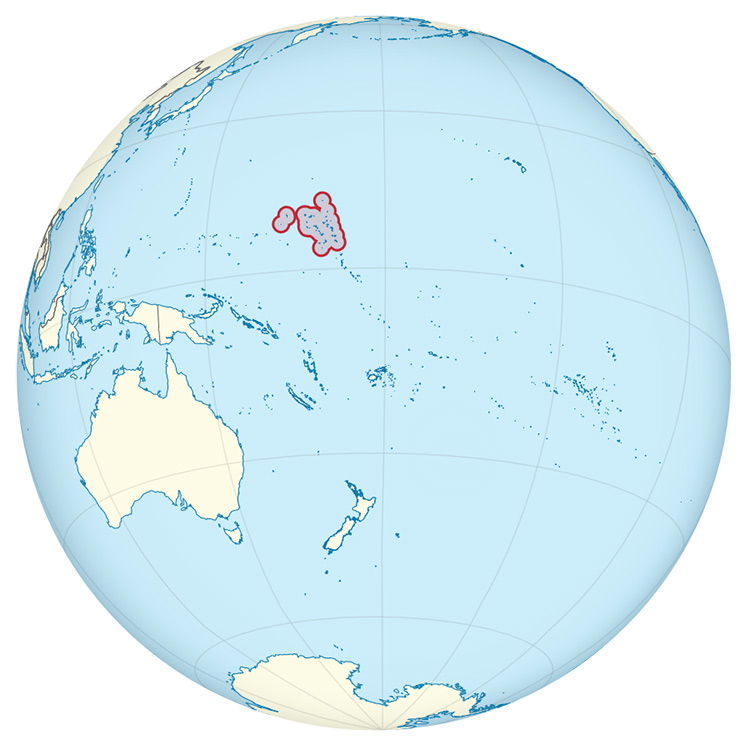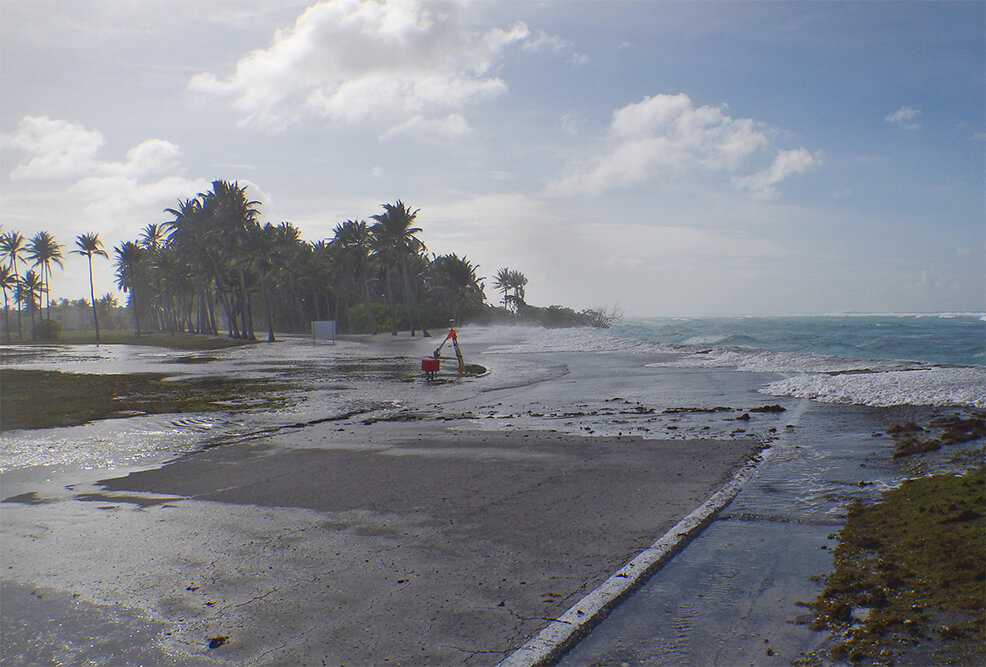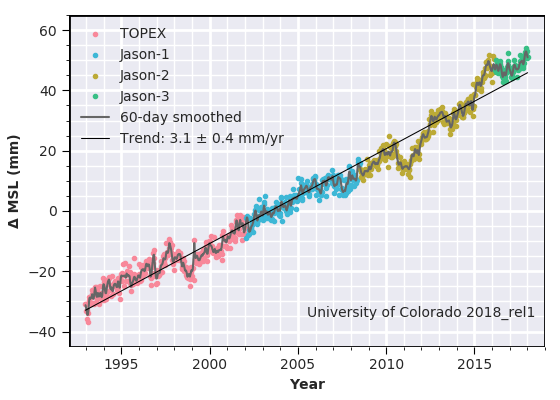
26th April 2018 Majority of atoll islands could be uninhabitable by the mid-21st century Rapid sea level rise and wave-driven flooding will negatively impact freshwater resources on low-lying atoll islands in such a way that most could be uninhabitable in just a few decades. According to a new study published in Science Advances, such flooding will not only damage infrastructure and habitats, but also, more importantly, will make the limited freshwater resources non-potable and, therefore, directly threaten the sustainability of human populations. Most of the world’s atolls are in the Pacific and Indian oceans. The researchers focused on the Republic of the Marshall Islands. This region has more than 1,100 low-lying islands on 29 atolls, contains numerous island nations and is home to hundreds of thousands of people.
Scientists from the U.S. Geological Survey (USGS), National Oceanic and Atmospheric Administration (NOAA), and the University of Hawaiʻi at Mānoa used a variety of climate change scenarios to project the impact of sea level rise and wave-driven flooding. The approach and findings in this study can serve as a proxy for atolls around the world, most of which have a similar morphology and structure – including, on average, even lower land elevations. “The tipping point, when potable groundwater on the majority of atoll islands will be unavailable, is projected to be reached no later than the middle of the 21st century,” said Curt Storlazzi, USGS geologist and lead author of the new report. Sea levels are now rising at an average of 3.1 mm (0.12 in) per year globally, with the fastest rates being in the tropics, where thousands of low-lying coral atoll islands are located. Previous studies on the resilience of these islands had projected they will experience minimal inundation impacts until at least the end of the 21st century. However, those previous studies did not take into account the additional hazard of wave-driven overwash (storm waters and waves that wash up and over the low-lying island), nor its impact on freshwater availability.
“Such information is key to assess multiple hazards and prioritise efforts to reduce risk and increase the resiliency of atoll islands' communities around the globe,” says Storlazzi. These findings have relevance not only to populated atolls in the Marshall Islands region, but also to those in the Caroline Islands, Cook Islands, Gilbert Islands, Line Islands, Maldives, Northwestern Hawaiian Islands, Seychelles, Society Islands and Spratly Islands. Thus, the study scientists project that, based on current global greenhouse gas emission rates, the interactions between sea level rise and wave dynamics over coral reefs will lead to an annual wave-driven overwash of the majority of atoll islands by the mid-21st century. Such annual flooding would result in them becoming uninhabitable due to frequent damage to infrastructure and the inability of their freshwater resources to recover between each disaster. The primary source of freshwater for populated atoll islands is rain, which soaks into the ground and remains there as a layer of fresh groundwater that floats on top of denser saltwater. As atoll islands come to be overwashed annually, on average, in the next few decades (assuming current greenhouse gas emission rates), flooding impacts to infrastructure and loss of freshwater resources would make human habitation difficult or impossible in most locations beginning between the 2030s and 2060s. This would require the relocation of island inhabitants and/or major investments in new infrastructure. “The overwash events generally result in salty ocean water seeping into the ground and contaminating the freshwater aquifer. Rainfall later in the year is not enough to flush out the saltwater and refresh the island’s water supply before the next year’s storms arrive repeating the overwash events,” explains Stephen Gingerich, USGS hydrologist and co-author of the new report.
Global average sea level rise. Credit: University of Colorado
Comments »
If you enjoyed this article, please consider sharing it:
|









